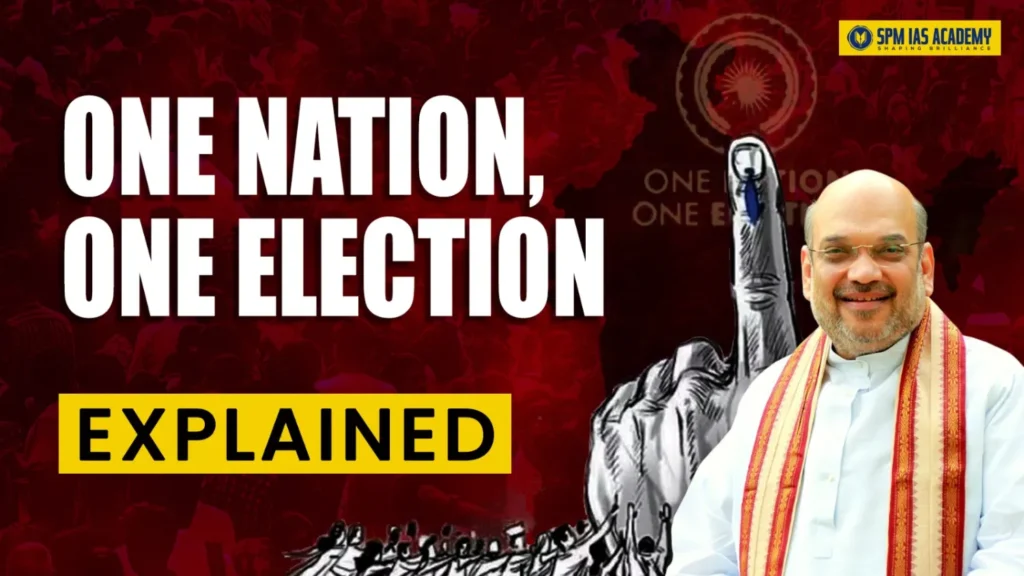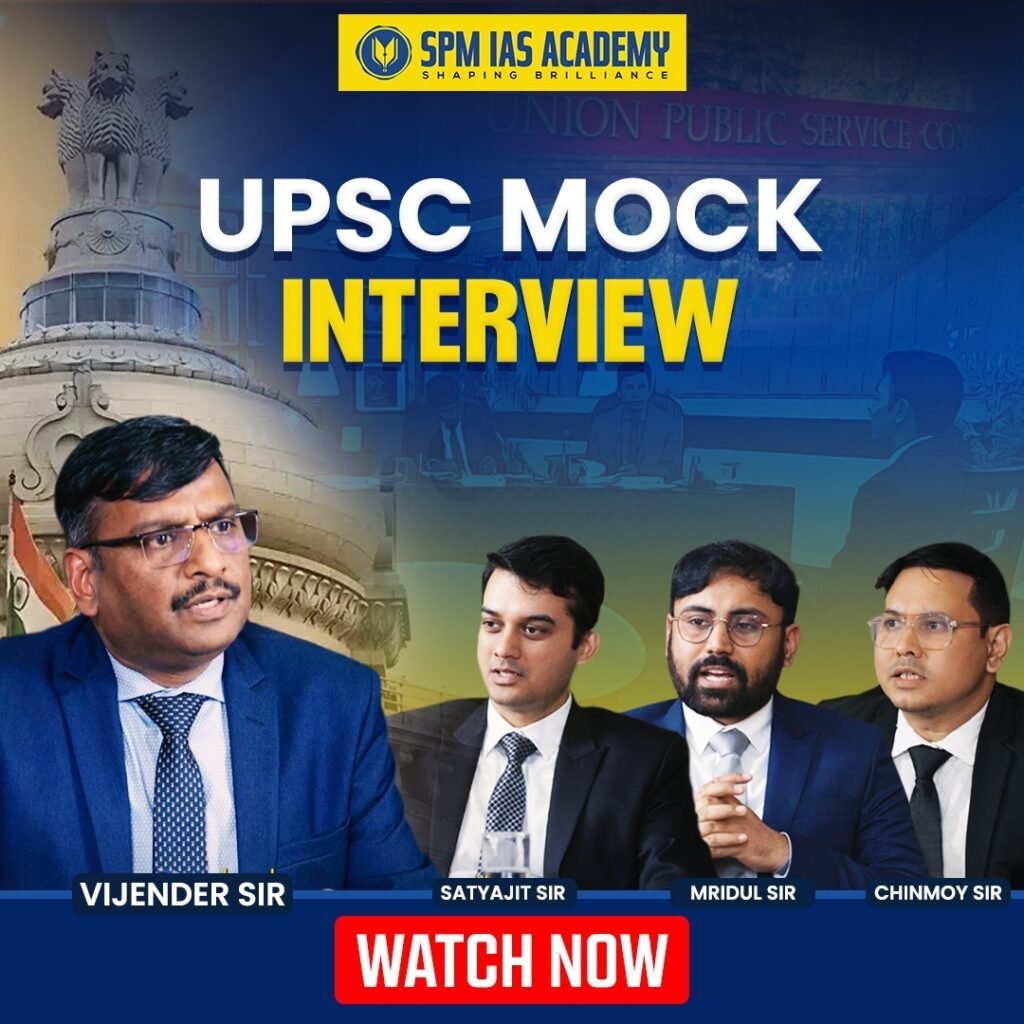Historical Background:
The idea of One Nation-One Election (hereinafter referred to as ONOE) relates to the holding of elections for the Lok Sabha and all the state legislative assemblies at the same time. This concept isn’t new for India; in fact, during the period 1951- 52 to 1967, India used to hold simultaneous elections. But from 1967 onwards, because of early dissolution of certain state assemblies and of the Lok Sabha such a process became staggered.
Over a period of decades, this staggered electoral process has continued. Recently, there has been a push to go back to synchronous elections, especially during Prime Minister Modi’s NDA Government. In 2017, the Law Commission of India prepared a report endorsing ONOE and the topic has regularly been in the public and political focus.
What is One Nation, One Election?
ONOE seeks to ensure that elections of such nature at the legislative level are synchronized across the country so that Lok Sabha and state assembly elections happen at the same time. In any case, this would mean dealing with yet another crucial aspect that there is only one election system most likely once in five years for both the union government and the state government. The purpose of such thinking is based on the opinion that elections do lead to some disruptions in the routine working of the government and the economy too – activities that they feel are unnecessary and that ‘ONOE’ will reduce the blemish in the democratic process.
One Nation One Election Proposal Cleared by Union Cabinet:
Union Cabinet has accepted report of the high level committee, headed by former President Ram Nath Kovind, regarding the ‘One Nation One Election’ proposal. The ‘One Nation One Election’ bill will be tabled in the following winter session of Parliament.
Key Recommendations of the Kovind Panel Report
The Panel stated that simultaneous elections shall be held for Lok Sabha and state Assemblies first, and within a hundred days local body elections shall be held. An ‘Implementation Group’ is proposed to be constituted which will monitor the adoption and implementation of the recommendations. The Panel recommended even preparing one national electoral roll and one voter ID card that would each be issued by the Election Commission in coordination with respective State election bodies.
There were 18 constitutional amendments that were recommended, though most of them would not entail ratification by state Assemblies but would rather muscle the passage of some constitutional amendment bills by Parliament.
Why “One Nation, One Election”?
One Nation, One Election Background was presented by the Union Minister of Law and Justice who explained the government’s reasoning and told of possible problems. As explained by the Union Law Minister to the Parliament one of the advantages of combined elections is that it saves money. One Nation, One Election plan indeed reduces expenses in bringing security and poll personnel at different times in a year.
This is also a strategy that helps in reducing the expenditures put up by political party campaign strategies. In addition, it can also lead to high voter turnout through synchronous elections. As of now, these turnouts differ according to the specific state.
How will Centre implement One Nation One Election?
An amendment to the Constitution is essential for the One Nation, One Election plan to be implemented. That amendment has to be approved by the state governments and the governments of UN territories in the country.
A warning given by legal experts: if such procedures are not affected, it may be taken as invitation to allegations of disregard or violation against the federalism that governs the nation.
There is need to effect changes in Article 83, Article 85, Article 172, Article 174 and Article 356 of the Constitution of India.
One of the biggest obstacles, amongst others, to carrying out the plan is the lack of a clear position on the matter of breaks by way of dissolving one or the other of the Houses or by way of the fact that the President is practically in charge of the country. Based on the polls of the public of India, it is evident as if the citizens of the country are ready for such a plan. Country has received more than 21,000 inputs. Out of all the suggestions made, about 81 percent recommended the One Nation, One Election view.
Pros of One Nation, One Election
1. Cost Efficiency:
Holding separate elections involves significant logistical costs in deploying security forces, setting up polling booths, transporting (EVMs), and conducting voter outreach programs. ONOE could drastically reduce these recurring expenses by consolidating all elections into one process.
2. Reduced Election Fatigue:
With elections being held in different states at different times, political parties, voters, and administrators face a constant cycle of campaigns. This frequent election cycle distracts from governance and leads to “election fatigue.” ONOE could give governments a full five-year term without the constant pressure of
elections.
3. Improved Governance:
The model of staggered elections often disrupts government functioning. The Model Code of Conduct (MCC) comes into play during elections, preventing the ruling government from announcing new policies or programs. With simultaneous elections, the MCC would be enforced once every five years, allowing governments to focus more on governance than electioneering.
4. Boost to Policy Consistency:
Simultaneous elections could result in more stable policies at both the central and state levels. Governments could focus on long-term policies without the fear of upcoming elections at state or national levels derailing their initiatives.
5. Voter Participation:
ONOE could potentially increase voter turnout by simplifying the election process and making it easier for people to participate in a single election, as opposed to multiple ones spread over years.
Cons of One Nation, One Election
1. Practical Challenges:
The disadvantages of One Nation, One Election include the biggest concern regarding its logistical feasibility. India is a vast and diverse country with varied political landscapes. Holding simultaneous elections across the country would require enormous administrative coordination, mobilization of resources, and massive security deployment.
2. Impact on Federalism:
Among the disadvantages of One Nation, One Election, its potential impact on federalism is significant. India is a federal polity with both central and state governments having separate powers, and ONOE might lead to the centralization of issues, with national issues potentially overshadowing regional concerns. This could weaken the federal structure by diluting the focus on regional governance, as the national agenda may dominate the political discourse.
3. Frequent Dissolution of Assemblies:
In the case of a mid-term dissolution of a state assembly or the Lok Sabha, how would the ONOE framework handle such situations? Having mid-term elections after ONOE would negate its entire purpose, yet not allowing them could lead to governance crises in cases where governments lose their majority.
4. Voter Confusion:
Another of the disadvantages of One Nation, One Election is voter confusion. With simultaneous elections, voters may face difficulties in distinguishing between national and state issues, leading to a blurring of responsibilities between the central and state governments. This could result in less informed voting decisions, where voters focus more on national issues at the cost of regional needs.
5. Opposition from Regional Parties:
A significant disadvantage of One Nation, One Election is the opposition from regional parties, who fear that simultaneous elections could lead to the dominance of national parties, especially the larger ones like the BJP and Congress. They argue that local issues would take a back seat, leaving smaller, regional parties disadvantaged in the political discourse.
Constitutional Challenges
Implementing ONOE faces significant constitutional hurdles, which are among the major disadvantages of One Nation, One Election.
1. Amendments Required:
The implementation of ONOE would require multiple amendments to the Constitution. For instance, Articles 83 (which deals with the duration of the Lok Sabha) and 172 (which deals with the duration of State Legislatures) would need modification to ensure synchronization.
2. Article 356 – President’s Rule:
In case of a breakdown of a state government, ONOE raises questions about how the state will be governed until the next round of elections. Invoking Article 356 (President’s Rule) could lead to situations where states are governed by the central government for prolonged periods, raising concerns over federalism and the misuse of constitutional provisions.
3. Judicial Scrutiny:
The judiciary might challenge the legality of ONOE, especially if it’s seen as curbing federalism or undermining the principles of representative democracy. India’s constitutional framework is based on the idea that central and state governments are separate entities with their own electoral processes. Altering
this dynamic could invite significant judicial scrutiny.
4. Political Consensus:
To pass the necessary constitutional amendments, a two-thirds majority in both houses of Parliament is required, along with ratification by at least half of the state legislatures. Achieving this level of consensus in a diverse political landscape may prove challenging.
Conclusion
To summarize, the One Nation, One Election conclusion highlights its significant potential advantages, including cost savings, enhanced governance, and the reduction of election fatigue. However, it also presents formidable challenges. In conclusion, One Nation, One Election offers significant potential advantages, including cost savings, enhanced governance, and the reduction of election fatigue. However, it also presents formidable challenges.












